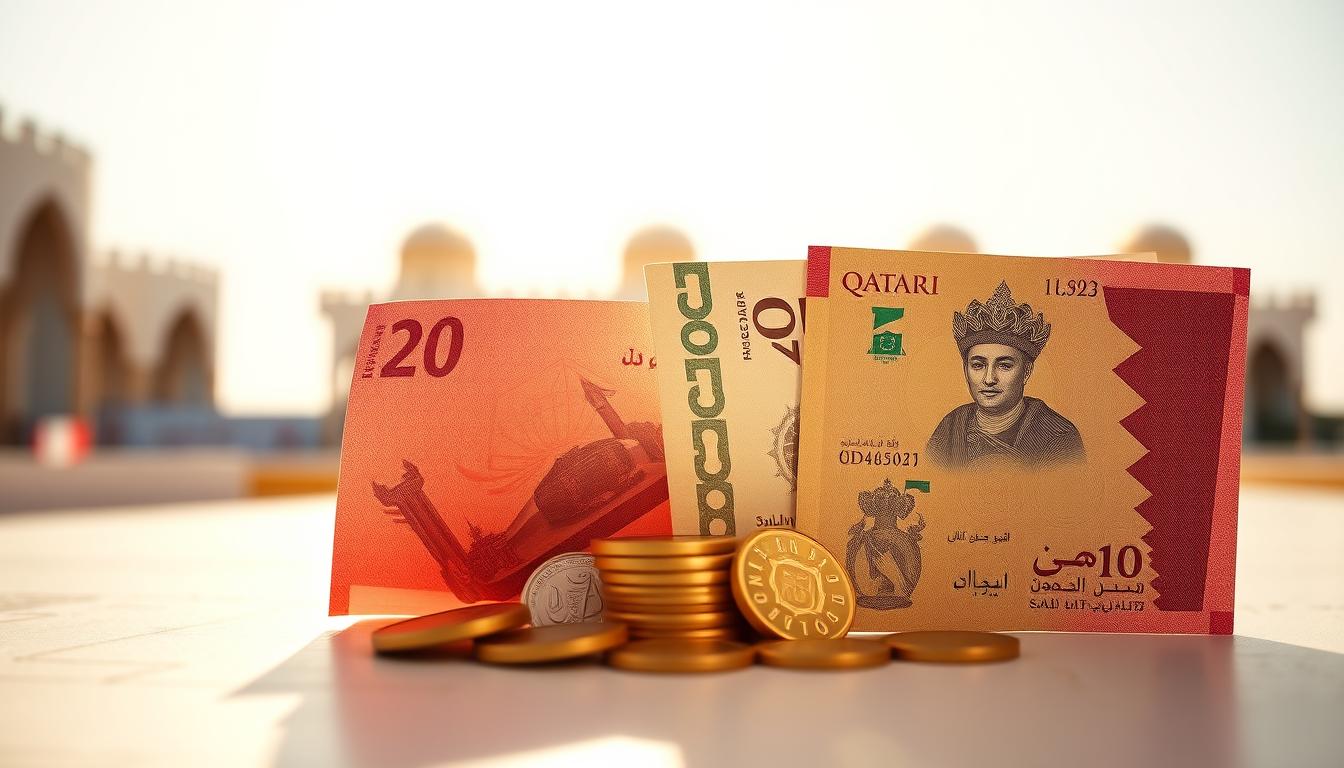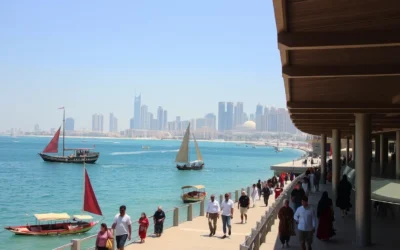✓ Accommodations ✓ Flights ✓ Rental Cars ✓ Tours & Activities
Did you know that over 70% of travelers overspend abroad due to poor currency exchange rates? Planning your finances before your trip can save you both time and money. This guide is here to help you navigate the essentials of handling currency and payments seamlessly.
When traveling, knowing the mid-market exchange rate is crucial. It ensures you get the best value for your money. Additionally, carrying multiple payment options like a card and cash can make your experience smoother. Many shops accept major credit cards, but smaller vendors often prefer cash.
Preparing ahead can also save you from unnecessary fees. For example, using a travel debit card can offer better conversion rates compared to traditional bank cards. This guide will walk you through practical tips and historical context to make your trip stress-free.
Understanding Qatar’s Currency Landscape
Navigating the currency landscape can make your trip hassle-free. The official currency is the Qatari riyal, abbreviated as QAR. This code is essential for identifying the currency in financial transactions. The symbol for the riyal is “ر.ق”, which you’ll often see on price tags and receipts.
Banknotes come in denominations of 1, 5, 10, 50, 100, and 500 riyals. Each banknote features unique designs that reflect the country’s culture and heritage. Smaller transactions, like buying snacks or paying for taxis, are often handled in cash. Larger establishments, however, accept cards.
In daily life, the Qatari riyal is widely used for everything from groceries to transportation. While credit cards are accepted in many places, having cash on hand is practical for smaller vendors. Understanding this balance will help you manage your finances effectively during your stay.
As you prepare for your trip, knowing the basics of the local currency qatar system is a great start. In the next sections, we’ll dive deeper into exchanging money and optimizing your payment methods.
Preparing for Currency Exchange Before Your Trip
Exchanging money in advance offers better rates and fewer surprises. By planning ahead, you can avoid last-minute hassles and ensure you get the most value for your money. This preparation also helps you steer clear of unnecessary fees that often come with on-the-spot transactions.
Benefits of Exchanging Currency in Advance
One of the biggest advantages of exchanging currency before your trip is securing a better exchange rate. Banks and online services often offer more favorable rates compared to airport kiosks or hotels. Additionally, having cash on hand when you arrive can save you time and stress.
Another benefit is avoiding hidden fees. Many exchange services charge extra for convenience, especially in high-traffic areas like airports. By preparing in advance, you can compare options and choose the most cost-effective solution.
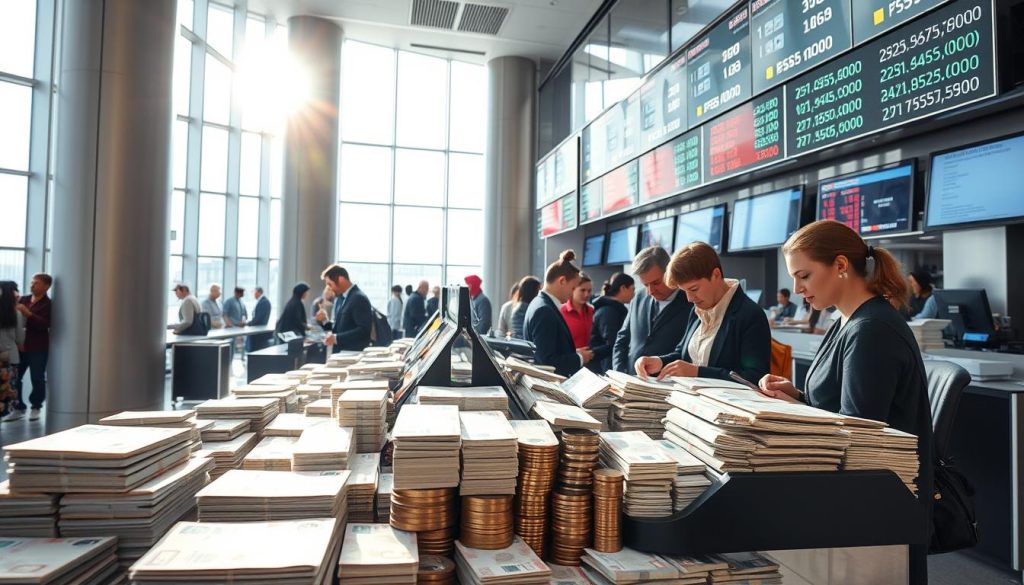
Comparing Mid-Market Rates Online
Finding the mid-market exchange rate online can save you money. This rate is the midpoint between the buy and sell prices of a currency, and it’s often the fairest option. Websites like Wise and Revolut provide real-time updates, helping you make informed decisions.
Here’s a quick comparison of popular currency exchange methods:
| Method | Exchange Rate | Fees |
|---|---|---|
| Banks | Fair | Low |
| Airport Kiosks | Poor | High |
| Online Services | Best | Low |
By comparing rates and fees, you can maximize your savings and ensure a smooth financial experience during your trip.
Tips for Minimizing Fees and Extra Charges
Avoiding unnecessary fees can make your trip more enjoyable. By planning ahead and making smart choices, you can save money and avoid common pitfalls. Here’s how to keep your finances in check.
Steer Clear of Airport Exchange Providers
Exchange providers at airports often charge high fees and offer poor rates. These services are convenient but costly. Instead, exchange your money before your trip or use reputable financial service providers for better rates.
If you need cash upon arrival, consider withdrawing from an ATM. Just be aware of withdrawal fees and foreign exchange charges. Always compare options to find the most cost-effective solution.
Understanding Dynamic Currency Conversion
Dynamic currency conversion (DCC) allows you to pay in your home currency instead of the local one. While it seems convenient, it often comes with high conversion fees. Merchants may offer this option, but it’s usually better to decline.
Always check your receipt to ensure you’re charged in the local currency. This small step can save you from unnecessary costs. Additionally, using a credit card with no foreign transaction fees can further reduce expenses.
Here are some quick tips to minimize fees:
- Avoid exchanging money at airports or hotels.
- Decline dynamic currency conversion when offered.
- Use a credit card with no foreign transaction fees.
- Compare rates from reputable financial service providers.
By following these tips, you can keep more money in your pocket and enjoy a smoother financial experience during your trip.
Optimizing Payment Methods During Your Stay
Choosing the right payment methods can make your trip smoother and more cost-effective. Balancing card and cash usage ensures flexibility and convenience. Here’s how to make the most of your payment options.
Using Travel Debit Cards Efficiently
Travel debit cards are a great way to save on fees. They often offer better exchange rates compared to traditional bank cards. For example, cards like Wise apply the mid-market rate, reducing conversion costs.
These cards also allow you to load multiple currencies, making them ideal for international trips. You can spend in over 50 currencies without worrying about hidden fees. This flexibility makes them a top choice for savvy travelers.
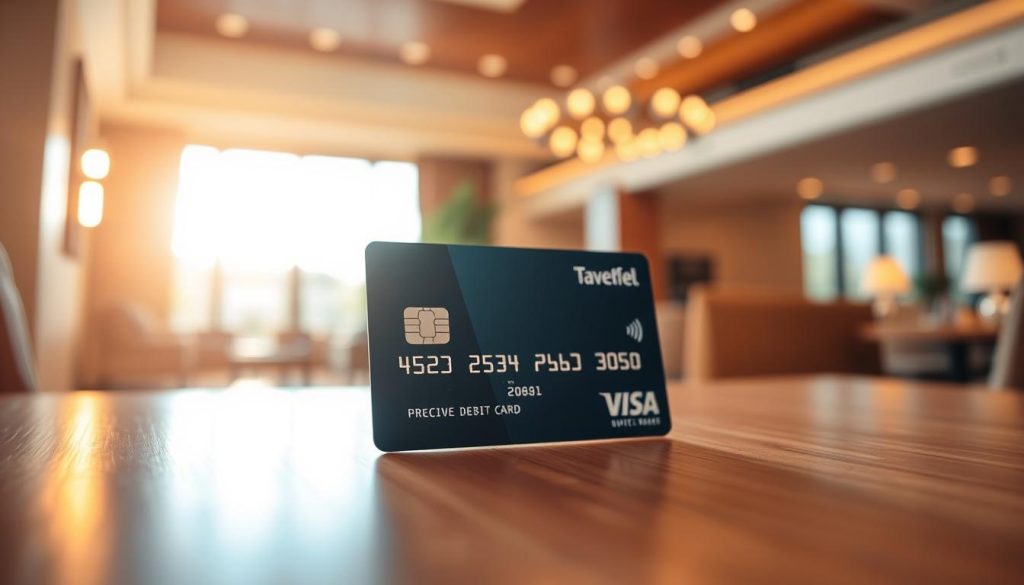
Combining Card and Cash for Flexibility
While cards are convenient, having cash on hand is essential for smaller purchases. Many local vendors and taxis prefer cash payments. It’s also useful for tipping and emergencies.
Using an atm to withdraw local currency is a reliable option. Just be mindful of withdrawal fees and exchange rates. Always check your bank’s policies to avoid surprises.
Here are some tips to balance your payment methods:
- Use a travel debit card for larger expenses and online bookings.
- Carry a small amount of cash for daily needs and tips.
- Withdraw money from atms in local currency to avoid extra charges.
By combining these methods, you can enjoy a hassle-free financial experience during your trip.
Exploring Cash Options in Qatar
Having cash in the local currency can simplify your daily transactions while traveling. It’s especially useful for small purchases, tipping, and places that don’t accept cards. The Qatari riyal is widely used, making it essential to carry some for convenience.
Advantages of Holding Qatari Riyal Cash
Carrying cash in Qatari riyals ensures you’re prepared for any situation. Many local shops, taxis, and markets prefer cash payments. It’s also a great way to avoid dynamic currency conversion fees that can add up quickly.
Having cash on hand can save you time and stress. You won’t need to search for ATMs or worry about card acceptance. Plus, it’s perfect for small expenses like snacks or public transportation.
Finding Reliable Currency Exchange Providers
Exchanging money at reputable providers can save you cost and hassle. City center exchange services often offer better rates than airports or hotels. Major banks and dedicated exchange centers are reliable options.
Always compare rates and fees before making a transaction. This ensures you get the best value for your money. Trusted providers like Al Fardan Exchange and UAE Exchange are known for competitive rates and quick service.
Here’s how to find the best currency exchange providers:
- Check online reviews and ratings for local exchange services.
- Compare rates from multiple providers to find the best deal.
- Avoid airport kiosks, as they often charge higher fees.
By following these tips, you can ensure a smooth and cost-effective experience with your Qatari riyal transactions.
Credit and Debit Cards in Qatar: What You Need to Know
Understanding how to use credit and debit cards abroad can save you money and stress. While cards are convenient, they often come with fees that can add up quickly. Knowing how to navigate these charges ensures a smoother financial experience during your trip.
Understanding Transaction and Conversion Fees
When using cards internationally, you may encounter foreign transaction fees and currency conversion charges. These fees typically range from 1% to 3% of the purchase amount. Some cards, like Wise and Monzo, waive these fees, making them ideal for travelers.
Always verify that transactions are processed in the local currency. This avoids dynamic currency conversion, which can add extra costs. For example, paying in Qatari riyals instead of your home currency ensures you get the best exchange rate.
Ensuring Secure and Convenient Payments
Security is crucial when using cards abroad. Opt for cards with built-in fraud protection and notify your bank of your travel plans. This prevents your card from being blocked due to suspicious activity.
Travel-friendly cards like Wise and Monzo offer additional benefits. They allow you to hold multiple currencies and provide real-time exchange rates. This flexibility makes them a top choice for planning trip finances.
Here are some tips for using cards effectively:
- Choose cards with no foreign transaction fees.
- Verify transactions are processed in the local currency.
- Notify your bank of your travel dates to avoid disruptions.
- Carry a backup card for emergencies.
By following these strategies, you can enjoy a hassle-free financial experience and focus on making the most of your trip.
Qatar: Ultimate Travelers Guide to Currencies & Payments
Managing your finances abroad starts with knowing the basics of the local currency. The official currency of Qatar is the Qatari riyal, and understanding its usage is essential for a smooth trip. This guide has covered everything from exchange rates to payment methods to help you prepare effectively.
Here’s a quick recap of the key points:
- The Qatari riyal is the only accepted currency, so foreign money isn’t interchangeable.
- Checking current exchange rates and planning ahead can save you from unnecessary fees.
- Using a mix of cards and cash ensures flexibility and convenience during your stay.
When planning trip qatar, it’s crucial to familiarize yourself with the local financial system. The official currency is widely used for everything from shopping to transportation. While cards are accepted in many places, having cash on hand is practical for smaller vendors and emergencies.
By following these tips, you can optimize your spending and enjoy a hassle-free experience. Whether you’re exploring the bustling markets or dining at world-class restaurants, understanding the qatar currency landscape ensures you’re always prepared.
Practical Tips for Currency Exchange in City Centers and ATMs
Finding the best places to exchange money can save you both time and money. City centers often offer better rates than airports or hotels. Knowing where and how to exchange currency ensures you get the most value for your money.
Identifying the Best Local Exchange Rates
When exchanging money, avoid airport kiosks. They often charge higher fees and offer poor rates. Instead, visit banks or reputable exchange services in the city center. These locations typically provide more competitive rates.
Timing your exchange can also make a difference. Rates fluctuate throughout the day, so check online tools or apps for real-time updates. Comparing local and online options ensures you secure the best deal.

Safe and Convenient ATM Use
Using an atm in a busy city center is a convenient way to access local currency. Look for ATMs located inside banks or secure areas to minimize risks. Always check for surcharges before withdrawing money.
Be aware of your surroundings when using an atm. Avoid using machines in poorly lit or isolated areas. Notify your bank of your travel plans to prevent your card from being blocked.
Here are some quick tips for safe ATM use:
- Choose ATMs in secure, well-lit locations.
- Check for additional fees before withdrawing.
- Notify your bank of your travel dates.
By following these tips, you can ensure a smooth and secure financial experience during your trip.
A Brief History and Evolution of Qatar’s Currency
The journey of Qatar’s currency reflects its rich economic history. From its early days using the Gulf rupee to the modern Qatari Riyal, the evolution of its monetary system is a testament to its growth and stability. Understanding this history can enrich your trip qatar experience by connecting you to its economic roots.
From Gulf Rupee to Qatari Riyal
Before the Qatari Riyal, the Gulf rupee was the primary currency. Introduced in the 1950s, it was tied to the Indian rupee. However, when India devalued its currency in 1966, Qatar faced economic challenges. This led to the introduction of the Qatar-Dubai riyal, a temporary solution shared with Dubai.
In 1973, Qatar established its own currency, the Qatari Riyal (QAR). Pegged to the US dollar at a fixed rate, it ensured stability. The Riyal is divided into 100 dirhams, with coins and banknotes reflecting the nation’s heritage. This transition marked a significant step in Qatar’s economic independence.
Historical Events Impacting the Currency
Several key events shaped Qatar’s currency policies. The establishment of the Qatar Central Bank in 1995 strengthened financial regulation. In 2003, new banknotes with enhanced security features were introduced, showcasing the country’s commitment to innovation.
Design changes in coin banknotes over the decades highlight Qatar’s cultural evolution. For example, the 2020 series introduced a 200 Riyal note, reflecting modern advancements. Historical currencies, like the Gulf rupee and Qatar-Dubai riyal, laid the foundation for today’s robust monetary system.
Here’s a quick overview of Qatar’s currency milestones:
- 1966: Transition from Gulf rupee to Qatar-Dubai riyal.
- 1973: Introduction of the Qatari Riyal (QAR).
- 1995: Establishment of the Qatar Central Bank.
- 2003: Launch of new, secure banknotes.
- 2020: Introduction of the 200 Riyal banknote.
By understanding this history, you gain insight into Qatar’s economic resilience. Whether you’re admiring the intricate designs of coin banknotes or using dirhams for small purchases, the legacy of Qatar’s currency adds depth to your trip qatar.
Managing Your Money and ATMs on the Go
Staying on top of your finances while traveling ensures a stress-free experience. Whether you’re exploring a bustling city or a quiet rural area, having a solid plan for managing your money can make all the difference. This section will guide you through effective strategies for using ATMs and planning your daily financial needs.
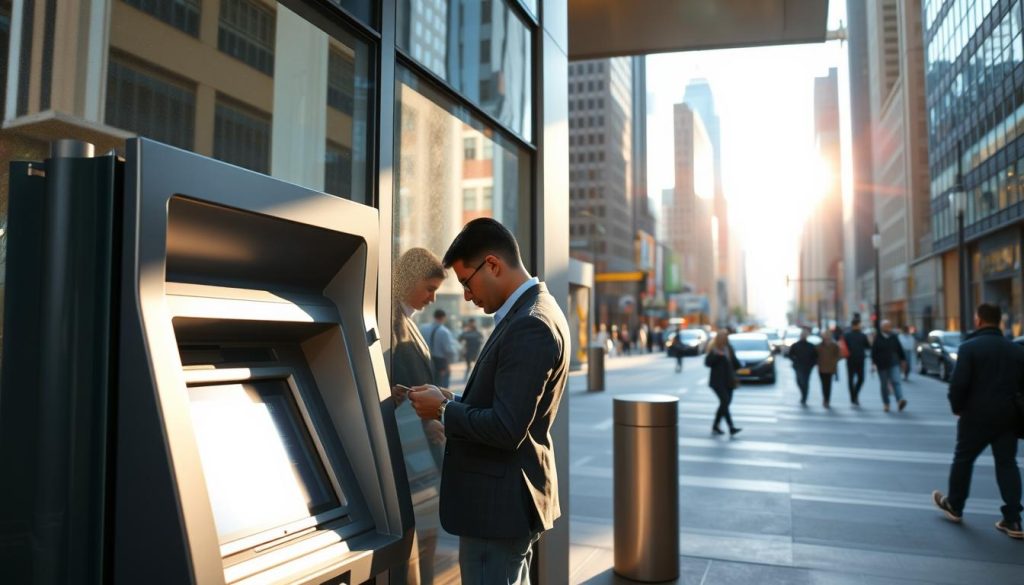
Strategies for Using ATMs in Different Settings
Using an atm is one of the most convenient ways to access local currency. In urban areas, look for ATMs inside banks or secure locations to minimize risks. These machines often have lower fees and better exchange rates compared to standalone ATMs.
In rural spots, ATMs might be less common. Plan ahead by withdrawing enough cash in advance. Always check for surcharges and notify your bank of your travel dates to avoid any disruptions.
Here are some quick tips for using ATMs effectively:
- Choose ATMs in well-lit, secure locations.
- Withdraw larger amounts to reduce the number of transactions and fees.
- Decline dynamic currency conversion to avoid extra charges.
Planning Your Daily Financial Needs
Knowing how much cash you’ll need each day can save you from unnecessary stress. For example, in cities, you might need more money for dining and transportation. In rural areas, smaller amounts may suffice for local markets and tips.
Carrying a mix of cash and cards ensures flexibility. Use a travel debit card for larger expenses and keep cash for smaller purchases. This way, you’re prepared for any situation.
Here’s how to plan your daily finances:
- Estimate your daily expenses and withdraw accordingly.
- Use a budgeting app to track your spending.
- Keep a small reserve of cash for emergencies.
Avoiding Unexpected Fees
When withdrawing U.S. dollars or converting currencies, fees can add up quickly. To avoid these, compare exchange rates and choose ATMs with low withdrawal fees. Using a travel debit card with no foreign transaction fees is another great way to save.
Always check your receipts to ensure you’re charged in the local currency. This small step can save you from unnecessary costs and help you stay within your budget.
By following these strategies, you can manage your money efficiently and enjoy a hassle-free travel experience. Whether you’re exploring urban centers or rural landscapes, these tips will help you stay prepared and confident.
Conclusion
Smart financial planning is the key to a seamless and enjoyable travel experience. By preparing in advance, you can reduce unnecessary costs and avoid common pitfalls. This guide has highlighted the importance of understanding the local currency and using services provided by reputable entities like the central bank.
Balancing cash and card usage ensures flexibility during your trip. Carrying the qatari riyal for smaller purchases and using cards for larger expenses can make your journey smoother. Always compare exchange rates and choose reliable providers to get the best value for your money.
Here’s a quick checklist to ensure a hassle-free financial experience:
- Plan your finances in advance to secure better rates.
- Use services from trusted sources like the qatar central bank.
- Carry a mix of cash and cards for flexibility.
- Notify your bank of your travel dates to avoid disruptions.
By following these tips, you can focus on enjoying your trip without worrying about financial hiccups. Safe travels!
The above is subject to change.
Check back often to TRAVEL.COM for the latest travel tips and deals.
